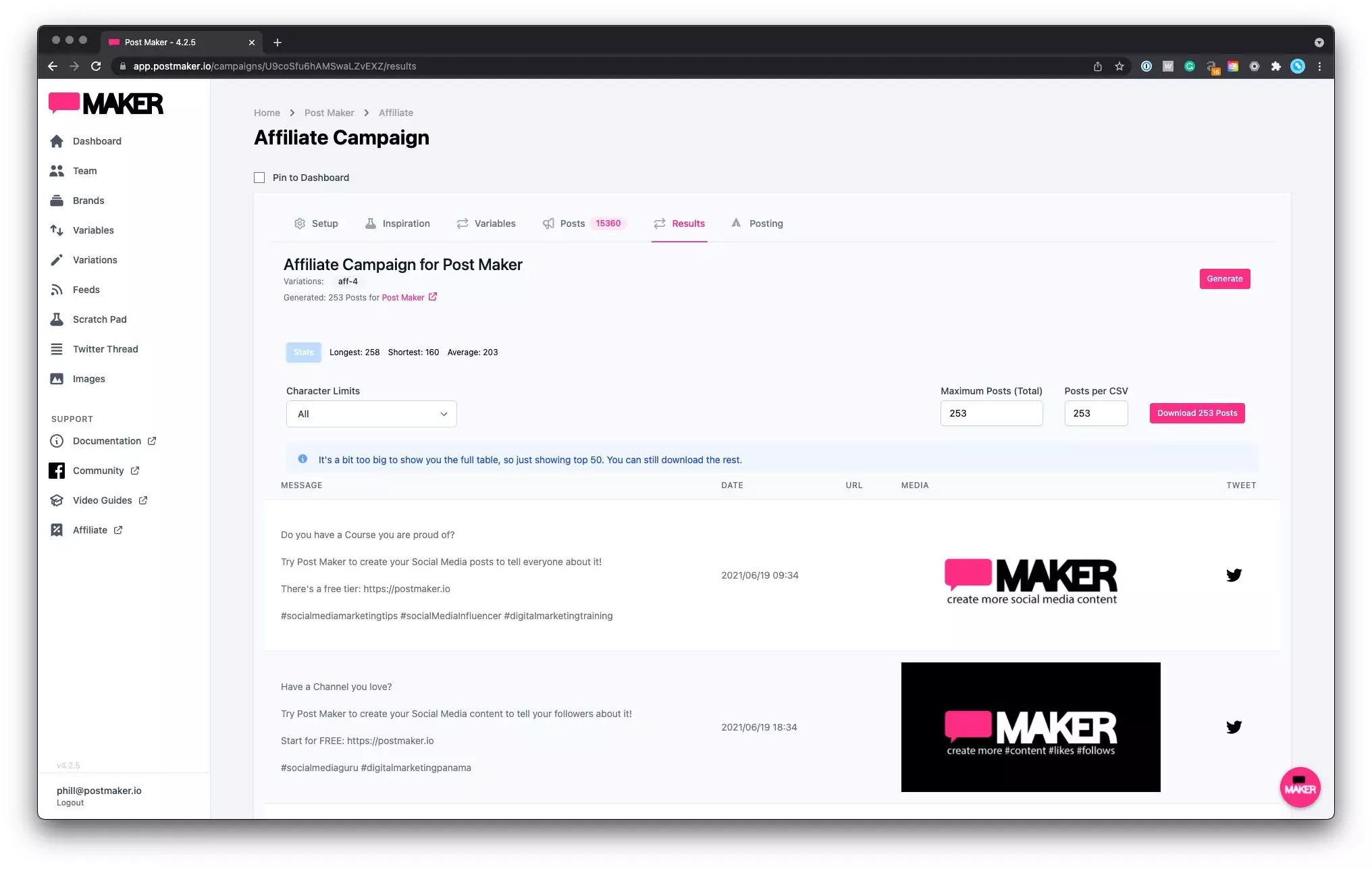A blog about...
How to Leverage Proactive & Reactive Marketing Strategies for Your Business
Proactive and reactive marketing are two fundamentally different approaches to business strategy. Proactive marketing involves anticipating and planning for future changes in the market and customer needs and staying ahead of the competition by developing products or services to meet those needs. Examples of proactive marketing strategies include market research, product development, and branding.
Reactive marketing is a response-based approach that centres around responding quickly to current market conditions and changing customer needs or the actions of one’s competitors. Reactive strategies involve promotions, price adjustments, and creative advertising campaigns tailored to capture customers’ attention.
By understanding both strategies, businesses can create a more effective long-term approach that benefits their bottom line.
In this post, we will look at the differences and similarities between the two approaches and the benefits and drawbacks of each.
Proactive Marketing

Proactive marketing is a forward-thinking approach that focuses on anticipating and planning for future market changes and customer needs. This approach is all about taking proactive steps to stay ahead of the competition and ensure the success of a business.
A key component of proactive marketing is market research. By conducting market research, businesses can gain valuable insights into the wants and needs of their target audience and identify trends and opportunities in the market. This information can then be used to develop new products or services that meet customers’ needs and create effective marketing strategies.
Another important aspect of proactive marketing is product development. By constantly innovating and improving existing products or services, businesses can stay ahead of the competition and attract new customers. This can be achieved by incorporating customer feedback, staying up-to-date with the latest industry trends, and investing in research and development.
Branding is also a crucial aspect of proactive marketing. A strong brand can help businesses to differentiate themselves from competitors and build a loyal customer base. This can be achieved by developing a unique brand voice, creating a consistent visual identity, and building a solid online presence.
A proactive approach has many benefits; the most important is staying ahead of the competition. By anticipating market changes and customer needs, businesses can make strategic decisions that position them for success. Additionally, companies can anticipate and meet customer needs by taking a proactive approach, increasing customer satisfaction and loyalty.
In summary, proactive marketing is a forward-thinking approach that focuses on anticipating and planning for future market changes and customer needs. By conducting market research, innovating and improving products or services, and developing a strong brand, businesses can stay ahead of the competition, attract new customers, and increase customer satisfaction and loyalty.
Here are some additional tips and action items for someone looking to implement proactive marketing strategies:
-
Conduct market research: This can be done through surveys, focus groups, online research, and other methods. The goal is to understand your target audience, their needs, and what sets your business apart from the competition.
-
Use the research to create a buyer persona: A buyer persona is a detailed representation of your ideal customer, including information about demographics, pain points, and goals. This will help you to create targeted marketing campaigns that speak directly to the needs of your audience.
-
Use the research to identify new opportunities: Look for patterns and trends in the data that can help you to identify new opportunities for your business. For example, if you notice a gap in the market, you can develop a product or service to fill that need.
-
Create a product development plan: Create a plan for developing new products or services based on the research and opportunities you’ve identified. This should include timelines, milestones, and a list of resources needed.
-
Develop a strong brand: This includes creating a unique brand voice, visual identity, and online presence. A strong brand will help you to stand out from the competition and attract new customers.
-
Develop a content marketing strategy: This includes creating valuable and informative content that will attract, educate and engage your target audience.
-
Keep an eye on your competition: Stay informed about your competitors’ activities and marketing strategies. This will help you anticipate market changes and make strategic decisions for your business.
-
Make use of technology: Utilise technology to your advantage, such as using marketing automation software, analytics tools, and other digital marketing strategies that can help you to reach and engage your target audience more effectively.
-
Create a measurement plan: Measure the performance of your proactive marketing efforts by setting up key performance indicators (KPIs) and monitoring them regularly. Then, use the data to make adjustments and improve your strategies.
-
Continuously repeat and improve: Proactive marketing is an ongoing process; it’s essential to continuously repeat the steps above and improve your strategies based on the data and feedback you receive.
Reactive Marketing

Reactive marketing is a response-based approach that focuses on reacting to current market conditions, customer needs, and the actions of competitors. This approach is about being flexible and adaptive and making quick decisions to stay competitive.
One common reactive marketing strategy is promotions. By offering special deals and discounts, businesses can quickly respond to changes in the market and attract new customers. For example, if a competitor offers a big sale, a business can provide its promotion to remain competitive.
Another reactive marketing strategy is price adjustments. By monitoring competitors’ prices and adjusting their prices accordingly, businesses can ensure that they remain competitive and attract customers based on merit.
Advertising is also an essential aspect of reactive marketing. By quickly creating and launching an advertising campaign in response to a market change or competitor’s action, businesses can ensure that they are reaching their target audience and staying top of mind.
Using a reactive approach has several advantages; one is responding quickly to market changes. By being flexible and adaptive, businesses can make quick decisions and take action promptly, which can help them to stay competitive in the market. Additionally, companies can build strong customer relationships and increase customer satisfaction by being responsive to customer needs.
In summary, reactive marketing is a response-based approach that focuses on reacting to current market conditions, customer needs, and the actions of competitors. By using strategies such as promotions, price adjustments, and advertising, businesses can quickly respond to market changes and stay competitive. In addition, businesses can build strong relationships with customers and increase customer satisfaction by being responsive to customer needs.
Here are some additional tips and action items for someone looking to implement reactive marketing strategies:
-
Monitor the market: Keep a close eye on the market, including competitor activities, changes in customer needs, and new trends. This will help you to identify opportunities and make strategic decisions quickly.
-
Create a monitoring plan: Set up a plan to monitor the market regularly. This can include setting up Google alerts, monitoring social media, and subscribing to industry publications.
-
Create a system for responding quickly: Establish a system for rapidly responding to market changes and competitor activities. This can include setting up a task force, creating a crisis communication plan, and having a transparent chain of command.
-
Use promotions: Offer special deals and discounts to attract new customers and quickly remain competitive in the market.
-
Monitor prices: Keep an eye on your competitors’ prices and adjust your prices accordingly. This will help you to remain competitive and attract customers based on merit.
-
Use advertising: Create and launch an advertising campaign responding to a market change or competitor’s action. This will help you reach your target audience and stay in mind.
-
Use social media: Social media can be an excellent tool for reactive marketing. Use it to respond to customer inquiries quickly, address negative comments, and share promotions and discounts.
-
Use analytics: Use analytics to track the performance of your reactive marketing efforts. Then, use the data to make adjustments and improve your strategies.
-
Continuously repeat and improve: Like Proactive marketing, reactive marketing is an ongoing process; it’s essential to constantly repeat the steps above and improve your strategies based on the data and feedback you receive.
By following these steps, you’ll be well on your way to implementing a reactive marketing strategy that will help your business respond quickly to market changes, stay competitive, and build strong relationships with customers. Remember that reactive marketing is a continuous process; you should always look for ways to improve and optimise your strategies.
When to Use Proactive or Reactive Strategies

Regarding marketing, there are two main approaches businesses can take: proactive and reactive. Each approach has its own benefits and drawbacks, and understanding when to use each is crucial for a business’s success.
Launching a new product
When launching a new product, it’s essential to use proactive and reactive strategies. Before the launch, a business should conduct market research, develop a unique product, and create a solid brand to set the product up for success. This proactive approach anticipates and plans for future market changes and customer needs.
However, it’s also important to be reactive once the product is launched. This means monitoring customer feedback and adjusting as needed, such as changing the product or offering promotions. It also means keeping an eye on the competition and adapting the product or marketing strategy to stay competitive.
Dealing with a crisis
In a crisis, a business should use a reactive approach. This means quickly responding to the problem and taking action to address the situation. For example, if a product is recalled, a business should soon issue a statement, offer refunds or replacements, and take steps to prevent the crisis from happening again.
Gaining a competitive advantage
A business should use a proactive approach to gain a competitive advantage. This means conducting market research, developing new products or services, and creating a solid brand to set the business apart from the competition. Additionally, keeping an eye on the competition and adjusting the product or marketing strategy as needed can be a practical approach.
Discussion of the importance of finding a balance between proactive and reactive strategies
A business must find a balance between proactive and reactive strategies to succeed. Proactive strategies can help a business stay ahead of the competition and anticipate customer needs, while reactive systems can help quickly respond to market changes and customer feedback. A balance between the two allows a business to make strategic decisions, quickly adapt to changing market conditions, and maintain a competitive edge.
In conclusion, the key to successful marketing is understanding when to use proactive and reactive strategies. By being proactive and reactive, businesses can anticipate and plan for future market changes, respond quickly to current market conditions, and maintain a competitive edge. Finding a balance between the two approaches is essential to achieve optimal results.
Implementing Proactive and Reactive Strategies Cohesively

How to integrate both approaches in a cohesive way
Combining proactive and reactive strategies can be a powerful way for businesses to stay ahead of the competition and meet the needs of their customers. Companies should identify their goals and objectives to integrate the two approaches cohesively. This will help to determine which strategies to use and when to use them.
Next, businesses should develop a plan that includes both proactive and reactive strategies. This plan should include timelines, milestones, and needed resources. It is essential to ensure the project is flexible and can be adjusted as needed.
Finally, businesses should monitor and measure the performance of their strategies. This will help identify areas needing improvement and make adjustments as needed.
Examples of companies that have successfully implemented both strategies
One example of a company that has successfully implemented both proactive and reactive strategies is Apple. Before launching new products, Apple conducts extensive market research and develops unique and innovative products. This is a proactive approach. However, once the product is launched, Apple also monitors customer feedback and adjusts as needed. Again, this is a reactive approach.
Another example is Amazon, which is known for using both proactive and reactive strategies. Proactively, Amazon uses data and analytics to anticipate customer needs and develops new products and services to meet those needs. Reactively, Amazon uses customer feedback and data to continuously improve its products and services and quickly respond to market changes.
Tips for businesses looking to use a combination of proactive and reactive strategies
-
Identify your goals and objectives: This will help you to determine which strategies to use and when to use them.
-
Develop a plan that includes proactive and reactive strategies: Make sure the plan is flexible and can be adjusted as needed.
-
Monitor and measure the performance of your strategies: This will help to identify areas that need improvement and make adjustments as needed.
-
Use technology: Utilise technology to your advantage, such as using marketing automation software, analytics tools, and other digital marketing strategies that can help you to reach and engage your target audience more effectively.
-
Keep an eye on your competition: Stay informed about your competitors’ activities and marketing strategies. This will help you anticipate market changes and make strategic decisions for your business.
-
Continuously repeat and improve: Proactive and Reactive marketing is an ongoing process; it’s essential to continuously repeat the steps above and improve your strategies based on the data and feedback you receive.
By following these tips and examples, businesses can successfully implement a combination of proactive and reactive strategies to stay ahead of the competition and meet the needs of their customers. Remember that it’s essential to monitor and measure your strategies’ performance, make adjustments as needed, and achieve optimal results.
Conclusion
In this blog post, we have discussed the differences between proactive and reactive marketing strategies. Proactive marketing is a forward-thinking approach that focuses on anticipating and planning for future market changes and customer needs by conducting market research, innovating, developing products, creating a solid brand, and using content marketing strategies. On the other hand, reactive marketing is a response-based approach that focuses on reacting to current market conditions, customer needs, and the actions of competitors by using strategies such as promotions, price adjustments, and advertising.
We have also discussed the importance of finding a balance between both approaches. When launching a new product, it’s important to use proactive and reactive strategies. In a crisis, a business should use a reactive approach, respond quickly to the crisis, and take action to address the situation. A business should utilise a proactive approach to gain a competitive advantage. Implementing both methods cohesively, businesses should first identify their goals and objectives, develop a plan that includes both proactive and reactive strategies, monitor and measure the performance of their strategy, use technology, keep an eye on their competition, and continuously repeat and improve.
We encourage readers to share their thoughts and experiences with proactive and reactive marketing strategies. We would love to hear about the methods and techniques that have worked for you and any challenges you have faced. We can continue learning and improving our marketing strategies by sharing our knowledge and experiences.
Ready to dive in?
Try it at no cost.
Make your day significantly better and check out PostMaker today.
